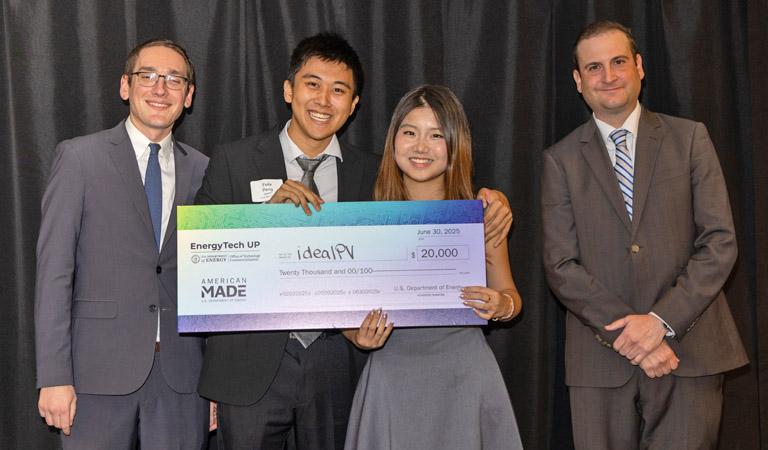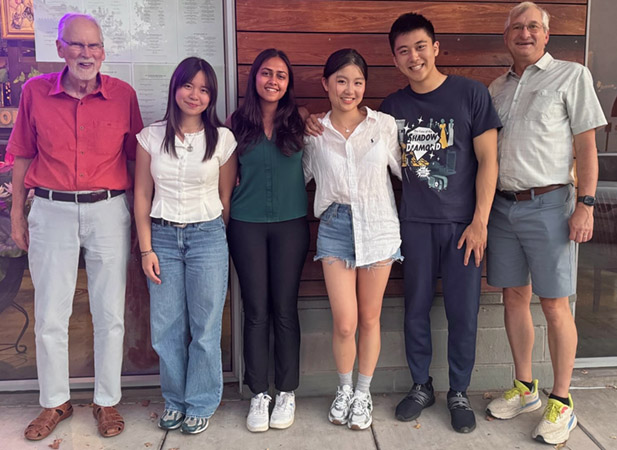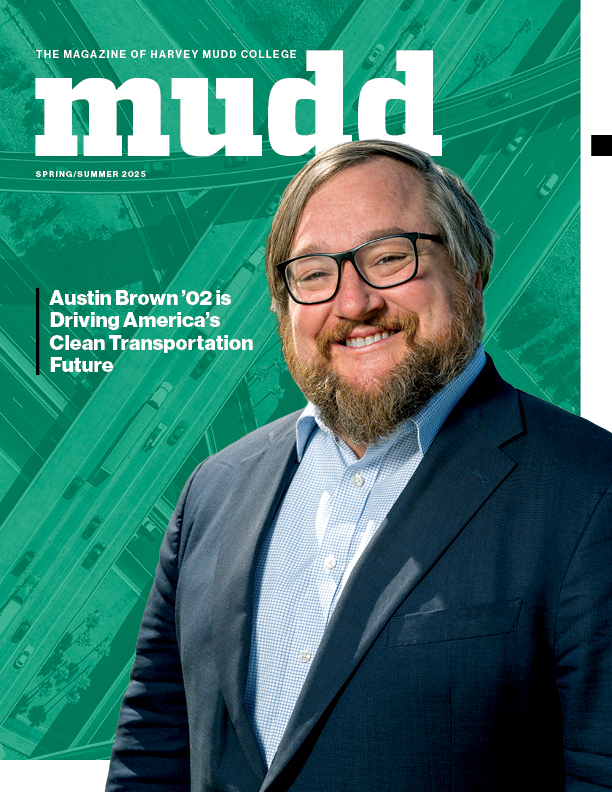Harvey Mudd Team Wins DOE EnergyTech UP Prize for Solar Safety Innovation
August 12, 2025
A student team from Harvey Mudd College won $20,000 at the U.S. Department of Energy’s EnergyTech University Prize (EnergyTech UP) 2025 National Pitch Event, hosted in June. Competing against finalists from universities across the country, Harvey Mudd’s Team IdealPV received the Solar Energy Technologies Office Bonus Prize for their innovative business plan to commercialize a patented solar technology that addresses one of the industry’s most pressing safety concerns: hotspot formation.
Hotspots—caused by shaded solar cells overheating—pose a serious fire risk in solar installations. The team’s proposed solution, idealPV—solar panel technology patented by Kent Kernahan—continuously monitors dynamic conductance and adjusts current flow in milliseconds, preventing reverse bias before it begins. Described by the team as “the airbag of the solar industry,” this technology can keep solar arrays operating safely and efficiently—especially important in high-risk wildfire areas like Southern California.
Harvey Mudd sophomores Felix Peng (team lead), Amy Li, Anika Sharma and Katie Cheng were inspired by past research led by physics Professor Peter Saeta.
“My involvement began with a Clinic project to validate Kernahan’s patented technology, which evolved into a full-blown research effort,” says Saeta. The resulting paper, co-written with Harvey Mudd professors Richard Haskell and Qimin Yang and five students, was published in the December 2022 IEEE Journal of Photovoltaics. “It was exciting when Felix approached me about entering the DOE competition. I’m thrilled with the team’s win.”
After being selected as an EnergyTech UP finalist and receiving a $5,000 prize, 24 multidisciplinary teams of post-secondary students from universities across the U.S.—pitched their innovative business plans to industry stakeholders and OTC leadership to bring a DOE National Laboratory-developed or other high-potential energy technology to market.
Peng, who competed in DOE challenges during high school and recently with mathematics Professor Weiqing Gu, assembled the team after revisiting Saeta’s published research. “We wanted to build a business case around an innovation with local impact,” he says. “In Southern California, solar innovation and wildfire risk are high, so safety innovation like idealPV made sense to us.”
Each team member brought a distinct strength:

- Engineering major Peng led project management and stakeholder outreach.
- Computer science and mathematics major Li conducted market sizing and economic feasibility analysis.
- Computer science and mathematics major Sharma developed the implementation and scalability strategy.
- Engineering major Cheng focused on articulating the technical edge of idealPV in the competitive solar landscape.
Peng says, “IdealPV eliminates the fire risk problem entirely by dynamically monitoring the slope of the current-voltage curve (dynamic conductance) and adjusting current in real time to keep every cell in safe operating range. We created a full implementation and licensing plan: launching a local pilot with nonprofit CHERP Solar Works, scaling through licensing to larger manufacturers and aiming for industry-wide adoption.”
The team’s success stemmed from a combination of personal connection to the problem, technical fluency and stakeholder validation—including input from firefighters, utilities, nonprofits and solar startups.
“This competition has been a springboard to so many opportunities in the climate tech space,” says Sharma. “I’m grateful for all the connections it brings.”
Student involvement in national STEM competitions reflects Harvey Mudd College’s goal of fostering a diverse cohort of engaged STEM leaders through exceptional teaching, learning and research.
